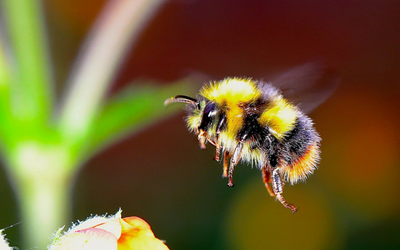Dogs are nosy creatures sniffing at anything of interest. Since dogs find insects interesting, they investigate them and when they stick their nose where it does not belong, they get a quick reprimand! Hence, lots of insect bites occur on the nose.
Since insects sting the closest body part, eyes, ears, and feet are easy targets. When a dog steps in an anthill or disturbs a wasp nest or beehive, the insects swarm and sting the dog’s whole body. Spiders are loners that do not swarm, but even one spider bite can be nasty.
The stings of bees, wasps, and hornets, and the bites of ants and spiders all spell trouble for a nosy dog. Insect venom causes problems ranging from mild irritation to life- threatening shock. Observant pet owners can minimize the reaction by taking prompt action. Keep in mind that even with first aid started at home, severe cases require prompt medical care.
What should I do if my dog is stung by an insect?
Be quick to recognize that your dog was bitten or stung. If your dog suddenly paws at his face, chews at his foot, or begins to swell in any area of the body, consider the possibility of an insect bite.
Identify the insect. Quickly search the area for flying insects as well as crawling ones. Since a spider is difficult to identify and may be poisonous, capture it if you can.
In the case of bee stings, look for a stinger. Bees are the only insects that leave their stingers in their victims. These abandoned stingers continue to secrete venom so removing them reduces the amount of toxin injected into the dog’s body. If the stinger is still attached to the dog, remove it by scraping a credit card over your dog’s coat and flick it off. Do not use tweezers that may squeeze more venom out of the stinger sac. Luckily, other flying insects (wasps, hornets) do not leave a stinger behind.
Soothe the bite site. Make a thick paste of baking soda and water and apply it to the sting site. If your dog has multiple stings or bites, a soothing oatmeal bath is the way to go.
Minimize swelling. Apply an ice pack to the affected area for 10 minutes to reduce swelling. A bag of frozen peas serves as a handy ice pack for individual bites. A cooled towel works better for larger areas.
Prevent allergic reactions. Give a dose of oral anti-histamine, such as diphenhydramine (brand names: Benadryl®, Vetadryl®) to minimize the reaction and decrease itching. Consult your veterinarian first for proper dosing.
Reduce the trauma of scratching. Use an Elizabethan collar (cone) if your dog continues to lick or scratch at the bite wound. Constant scratching will delay healing and may cause infection.
Maintain hydration and food intake. Give your dog fresh water to drink. Dogs that are stung in the mouth may find it difficult to eat so feed them moist food. Dry food softened with water is less likely to upset the gastrointestinal tract than canned food.
When is an insect bite serious?
Like some people, many dogs are hypersensitive (very allergic) to insect stings or bites. The degree of reaction varies with the dog’s immune system and the type of insect. Allergic reactions usually occur within 20 minutes of the bite, but may be delayed for hours, so close monitoring is critical. Severe reactions (anaphylaxis) can be fatal so quick action is vital. Take your dog to the veterinary emergency clinic at the first sign of:
- Severe swelling around the head and neck that could compromise respiration. Swelling in these areas may occur even if the bite occurred elsewhere.
- Hives on any part of the body. Hives appear as bumps under the skin that raise the hair, or as red bumps on hairless areas like the belly. Hives itch a lot, so your dog may roll in the grass or on the floor in an attempt to scratch at hard to reach places.
- Difficulty breathing or wheezing. Some dogs pant more than usual because they have swelling in the respiratory passages and/or because they are nervous. Do not attempt to figure out the reason, take your dog to your veterinarian.
- Excessive drooling. If there is swelling in the throat, the dog has difficulty swallowing his own saliva and drools a lot.
- Agitation. Some dogs become anxious due to the itching and difficulty breathing. Also, the insect venom may affect the nervous system.
- Vomiting or diarrhea. Even mild vomiting and soft stool can indicate trouble, so do not disregard this sign.
- Dizziness or disorientation. If your dog is not alert or stumbles, he is having more than the normal reaction.
- Seizures. Call your veterinarian immediately.
Medical treatment may save your dog’s life and is aimed at reducing the allergic reaction and preventing shock. In addition to anti-histamines, your veterinarian may give your dog corticosteroids or epinephrine. Your veterinarian may administer intravenous (IV) fluids to stabilize the dog and oxygen to help respiration. Blood and urine tests may be needed to rule out organ damage. The length of the hospital stay depends on how quickly your dog responds to therapy but expect to leave your dog at the hospital for 1 or 2 days. Once the danger is passed and your dog returns home, your veterinarian may prescribe an Epi-Pen® for use in future insect stings. The goal here is not to stifle your nosy dog’s curious nature, but to be prepared for the consequences. That means you have to act quickly in case she reacts to an insect bite.


